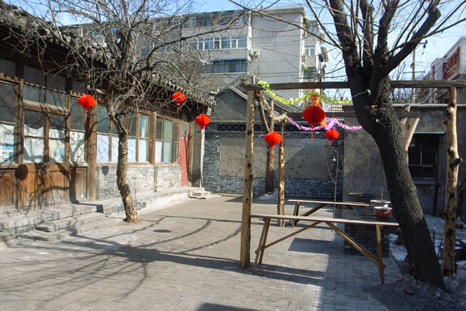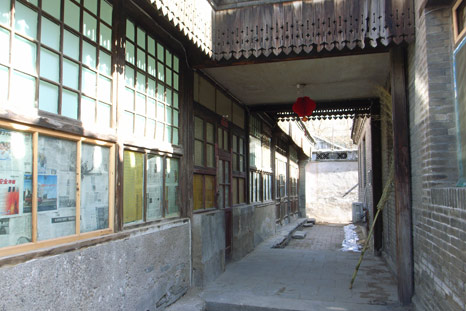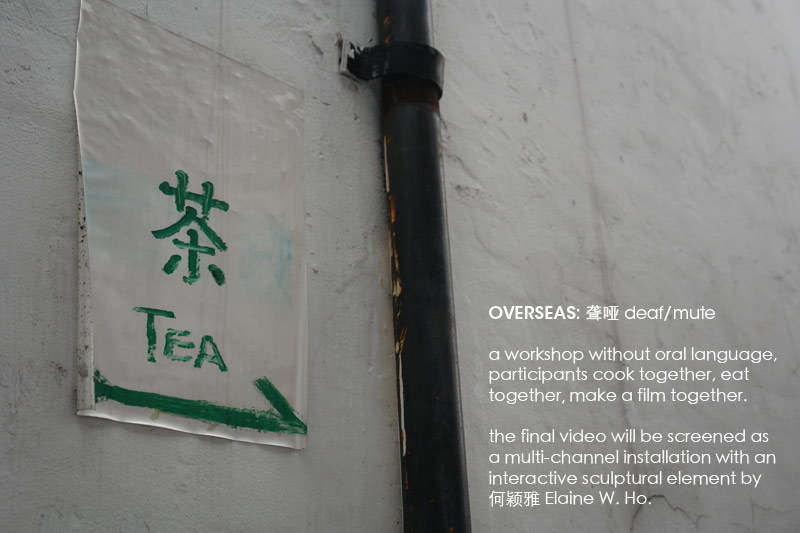cesar is working currently on a project that is under the working title ‘open architecture’ that will result in a construction of a special boat, sailing over the atlantic. these are his two blogs: http://www.2012hopes.com/ and http://opensailing.net/. a very intersting project. so he talked a lot about his work and his visions and it turned out that a lot of the things were quite interferring with my interst in the courtyard project. key words of our work will be:
- shift of power/tension in a space
- self assembly
- brownian movement
- swarm
- meeting
we made an experiment in the entrance hall of the tate museum in london (participants: Mike Chan, Elpida Orfanidou, Simone Truong, Cesar Harada, thanks to you all), where we reacted with simple rules onto the visiters of the museum. unwillingly the visitors became performer and director of the choreography we where making. rules were, for example:
- when someone looks at something you look at it too
- when someone stops, you turn around yourself
- when someone crosses the space you try to intersect their pathway
- when a group of people cross you try to split the group in two, etc
underneath is another video of a program that cesar designed with a friend (hiromi ozaki) also studying at the royal college in london. on the right side you see a list of (in green) enviromental conditions like earthquake zones, dry zones, cold zones and (in red) the human conditions like epidemie. those items are all connected to a programm that transfers actual data onto this map. the little dots that move around are humans that react to the danger zones, like that they drift in the world around. well what a like about those two videos is that they actually show very similar things, how humans move in space reacting to their environment and unconsciously without sometimes knowing eachother, influencing eachother. i think in a smaller scale it will be in a community of a courtyard the same. so the upper keywords will be used in dance/movement in relationship to your own body, other bodies, the architecture or the further enviroment.
He Yufan & Jiang Jun
何雨繁(He Yufan): He graduated from the architecture department of Tsinghua University ( Note: this is the best in China! ) and he is now a freelance director and actor. He is 30 years old and has done 5 works since 2006. He was invited to the Netherlands for the Oerol Art Festival with his play “Oosterburen”, and to France with “Knocking on Heaven’s Door” as well as Hong Kong with “飞吧临流鸟飞吧”. He was just invited by the British national theatre to visit London in 2008. His play “8008” which featuring the 80s generation in China was played along with other young directors’ works in the first Beijing Youth Theatre Festival in fall, 2008.
姜均(Jiang Jun) is 25 and she graduated from Beijing Dancing School. She started her career as an independent creator since 2004. She established the “Fan Troupe” in 2006 and has directed 4 works together with He thereafter. She has taken part in Julidans Art Festival in Holland, International Theatre Festival in Zurich, and many other festivals in Hamburg, Berlin, Salzberg and London. She was the co-director with He for their play “8008”.
An interview of them (in Chinese): http://www.u2lux.com/article/20080830/3722_2.html
Posted by sylvie | reply »forgetting the words
荃者所以在魚,得魚而忘荃(魚網);蹄者所以在兔,得兔而忘蹄(兔置)。言者所以在意,得意而忘言;吾安得夫忘言之人而與之言哉?
Nets exist for catching fish; once a fish is caught, the net is forgotten. Traps exist for catching rabbits; once a rabbit is caught, the trap is forgotten. Words exist for expressing ideas; once the ideas are expressed, the words are forgotten. i would like to find someone who forgets words and have a talk with him!
— 庄子 Zhuangzi,《外務》”Waiwu”
“The real escapes language, or rather, and more serious still, language hides reality, because language immediately posits us inside the unilaterality of a point of view. I say this as opposed to that, I see things this way as opposed to that way. As soon as we speak, we are closed inside a partiality that makes us miss the essential communal dimension of things. The characteristic of language is to mark differences, that of discourse is to use languages to state an opinion, whereas lack of differentiation characterizes the Tao of reality.” (from Detour and Access, François Jullien)
Posted by e | reply »‘Overseas’: 24. February 2009, Züri-Plage, Gessnerallee Posted by mon | more »
Deaf/Special Education in Beijing
There are several special schools in Beijing that are built for deaf or blind children:
· 大兴区特教中心
· 平谷区特教中心
· 北京市第四聋人学
· 北京市第三聋人学校(北京市残疾人职业高中)
· 北京市第二聋人学校
· 北京西城人工耳蜗培训学校
· 北京市第一聋哑学校
Source: http://www.deafchina.com/edu/longyaxuexiao/index.html
Also, there’s an NGO which is sort of well-known called “红丹丹”: http://www.hongdd.china001.com/
Posted by sylvie | more »chinese whispers
 image from the 2008 installation of Chinese Whispers at Ellen deBruijne Projects in Amsterdam
image from the 2008 installation of Chinese Whispers at Ellen deBruijne Projects in Amsterdam
became extremely interested in the work of Suchan Kinoshita again, well once over, not understanding the first time, as I realised in the search that we had seen her work before, at the skulptur projekte münster in 2007, when i got more interested to photograph the simple space than listen to the words… it was language that came between us (german) and with no translation in sight or sound, i used the set, or maybe it was weariness from the art-trekking… had not thought about it at the time, but the theatrical element was very strong —-the kind of box that you wanted to dance in—- and it turns out she has a background in experimental theatre as well… considerations for the direction of the audiences in space. She seems to like the between spaces. What about context as a between space, context surpassing even content? does language matter any more in a perforated box that you want to move in? And ashamed to admit it, but was looking for it in her cultural identity as well (half Dutch, half Japanese). Guilty of my own reductionist fears…
Today someone saw a copy of Wear and said, “Oh, it’s this kind of outsider’s perspective isn’t it?” And when his wife was flipping through it a while later and asked where I am from, she said “Oh, banana.”
Sigh, sigh sigh… I long for the Chinese whispers to happen a bit faster…
Between me and you is the “and” – it is spoken language that connects people to one other. And it is also words that separate them – if the “and,” for instance, were suddenly to disappear. “Chinese whispers,” known in German as “Stille Post” and in French as “téléphone arabe,” is a kindergarten game that illustrates our dependence on language more clearly than any linguistic theory. One person secretly whispers something into his neighbor’s ear, and he conveys what he has understood to the next person, and so on until – at the end of a long row of people – the last person hears something that, thanks to misunderstandings and misinterpretations, no longer resembles the original message. In her project for skulptur projekte münster 07, Suchan Kinoshita re-enacts this childhood game, selecting sentences from illustrated magazines or writings of various philosophers and language theorists as well as asking speakers commissioned by her to invent their own sentences. Other participants include so-called “disrupters,” who deliberately alter the phrases by translating them into other languages. With sensitive recording techniques, Kinoshita eavesdrops on these “Chinese whispers,” powerfully illustrating how the spoken word is subject to continuous change. In the Münster Chamber of Commerce, visitors can hear the resulting sound loop twenty-four hours a day without interruption. The large window in the showroom provides a full view of the street outside, which will almost automatically become the focus of the listener’s gaze. But standing in this open space, his ears entranced by “Chinese whispers,” he will have the chance to reflect on Wilhelm von Humboldt’s assertion that there is no escape from the circle drawn around us by our language.
–from the description of the project Chinese Whispers (Stille Post) [2007] available here, with Suchan Kinoshita’s interesting biography
Posted by e | reply »园子/haus


Mr. Tong’s family has had this property since about 1911, when his great-grandfather took it over and renovated the entire plot. The layout is quite different from a traditional siheyuan, with two rows of rooms that both face south, the southernmost one opening to a large open courtyard space, about 100+ square metres. There is a date tree, the timber framework for vine plants to be planted in the spring and a funny old tree with a spiralling trunk. There are no rooms facing inward from the west, east or north, and Mr. Tong says that particularities of this design were highly influenced by his great-grandfather’s time spent abroad, when he studied in Germany. Mr. Tong’s great-grandfather’s library was located in one of the center rooms on the south end, with stacks of Chinese and German books from floor to ceiling. These were all destroyed during the Cultural Revolution, but most everything else, though, has been kept in its original form. The natural-stained timber is unusual for Beijing architecture (not painted/decorated the usual lively colours), but this taste is also perhaps something more akin to southern Chinese styles, as their family was originally from the South, not Beijing. Mr. Tong defends his home, and he points out that this hybrid will actually be more “traditional” than you would find in many other seemingly traditional siheyuan houses, as many of the versions available now in Beijing are copies, renovated reduxes made popular from this revival of “traditional as style”. Most of the timber used in Mr. Tong’s house is still the original wood from when it was built, down to the hardwood floors and infrastructure, and they insist that everything should be kept as is; they have a respect for its own form of originality, and insist that no changes should be made to the rooms or layout. When a toilet was finally added to the house later on, they purposefully kept it separate from the rest of the rooms, on the western side in a relatively non-descript fashion off of a narrow corridor. The kitchen is next to that, and while relatively unfurnished with appliances, Mr. Tong and his wife suggest that you can have food brought and eat all together here, and then retire to your own rooms after.
*this is the courtyard recommended by Anouchka (yes, they said you are cute!)…
Posted by e | more »聋哑 EATING sketch 1
What do we recognise of one another, as we are taking in, ingesting,
ingesting as sharing
i/o, he says
eating Chinese
busy
What do we miss
not hearing this
not to be identified
(a small notion)
Posted by e | more »何颖雅 sketches winter 09: 聋哑的
questions:
If we start without oral language, where does culture take us?
What forms of access can be granted by sharing a meal together?
Among strangers, what routes does “the natural” take?
What is Chinese food?
[will post an “audio” element tomorrow… also can send larger-resolution images by e-mail for your meeting]
Posted by e | more »clear distinction between private and common space: “one bright and two dark; one primary one two secondary.”
